What's New
Displaying results 3431 - 3440 of 4924
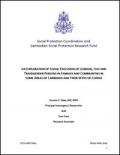
Resource | Publications,
Social Exclusion on the basis of gender identity and sexual orientation (SOGI) is complex and may not be readily acknowledged by authorities. Other factors that can influence exclusion are poverty, illiteracy, lack of awareness about social protection mechanisms and how these can be accessed, some religious practices, cultural norms about males and females, husbands and wives, and families, and type of occupation (such as sex work); however SOGI‐based exclusion appears to be a major cross‐cutting feature that cannot be disregarded. Many LGBT are mobile and even while living together with a partner in a stable relationship, they are not officially and legally recognized as partners, a husband‐wife team, a couple, or as a family.
The study makes recommendations for policy‐makers, program planners and project implementation to consider Sexual Orientation and Gender Identity (SOGI) as crosscutting factors that can influence participation, delivery of social services, and access to education, work opportunities and justice. Awareness and Education activities on SOGI support for informal groups and associations, as well as areas for further research are recommended.
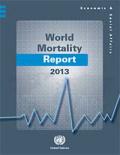
Resource | Publications,
The World Mortality Report 2013, prepared by the Population Division of the Department of Economic and Social Affairs of the United Nations Secretariat, assesses changes in mortality risks at the global, regional and country levels, focusing in particular on the implementation period of the Programme of Action of the International Conference on Population and Development, from 1990-1995 to 2010-2015. The report reviews the survival targets outlined in the ICPD Programme of Action and discusses them in the context of other internationally agreed mortality reduction goals, including the Millennium Development Goals. It evaluates the progress of regions and countries with respect to life expectancy at birth, child mortality, mortality in the reproductive and working ages, and life expectancy at advanced ages and discusses the contributions of improvements in survival at different stages of life towards the achievement of the ICPD survival targets. Disparities in progress towards those targets are partially explained by examining differences between selected countries in the sex and age patterns of mortality reduction. Some priorities for future reductions in mortality risks are discussed.
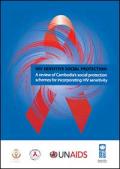
Resource | Publications,
While Cambodia has successfully reduced the aggregate level of HIV infection through committed government leadership, effective policies, and strong civil society engagement, HIV is still directly affecting more than 60,000 households across the country. Based on the national average household size of 4.7, this amounts to at least 280,000 individuals, or more than 2% of Cambodia's total population, who may belong to marginalized sections of society.
The findings of the review are intended to generate dialogue and guide discussions among relevant government agencies, UN, and key civil society stakeholders in a collective effort to integrate HIV into social protection efforts in Cambodia. There are a number of key mechanisms, including Technical Working Groups (TWG) and Task Forces whose members will be well-placed to continue the dialogue on HIV-sensitive social protection, and mobilize the Next Steps set out in the recommendations.
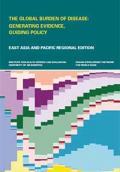
Resource | Publications,
The Global Burden of Disease (GBD) approach is a systematic, scientific effort to quantify the comparative magnitude of health loss due to diseases, injuries, and risk factors by age, sex, and geography for specific points in time. Box 1 describes the history of GBD. The latest iteration of that effort, the Global Burden of Diseases, Injuries, and Risk Factors Study 2010 (GBD 2010), was published in The Lancet in December 2012. The intent is to create a global public good that will be useful for informing the design of health systems and the creation of public health policy. It estimates premature death and disability due to 291 diseases and injuries, 1,160 sequelae (direct consequences of disease and injury), and 67 risk factors for 20 age groups and both sexes in 1990, 2005, and 2010. GBD 2010 produced estimates for 187 countries and 21 regions. In total, the study generated over 1 billion estimates of health outcomes.
GBD 2010 was a collaborative effort among 488 researchers from 50 countries and 303 institutions.
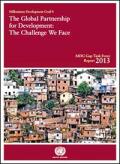
Resource | Publications,
The Millennium Development Goals (MDGs) have mobilized action from Governments, civil society and other partners around the world, with significant results. Extreme poverty has been cut in half. More people have access to improved sources of water. Conditions are better for 200 million people living in slums. More girls are in school. Child and maternal mortality is declining.
Around the world, wherever we look, the MDGs have brought success—but not complete success. Achievements vary within and among countries. Globally, we are lagging badly on some targets—especially sanitation, which poses a major threat to the health of people and the environment.
The present report tracks delivery on the commitments listed under Millennium Development Goal 8—the global partnership for development. Some of the indicators show progress, but efforts towards the United Nations target of allocating 0.7 per cent of gross national income to development aid have been receding in the past two years. We must reverse this trend.
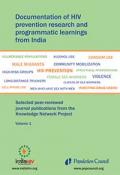
Resource | Publications,
At this critical juncture, it is important to understand the lessons learnt from the implementation of HIV prevention programs and the vulnerabilities that need to be addressed to reach the goal of zero new infections. To support this understanding, the Population Council and its Knowledge Network Project partners have been engaged in a project to document and disseminate evidence-based lessons from upscaled HIV prevention programs in India.
As part of this initiative, we have compiled this volume of articles published in peer-reviewed journals, which represents selected documented work. The volume is divided into four sections: Section I presents evidence on the changing epidemiology of the epidemic and the impact of HIV/AIDS prevention programs; Section II brings together learnings from program interventions including community mobilization interventions for female sex workers; Section III focuses on the vulnerabilities of high-risk groups such as female sex workers, MSM and IDUs; and Section IV includes papers on the vulnerabilities of bridge populations such as migrants, male clients of sex workers and trucker populations. Research highlights are presented at the start of each section. Sequential page numbers have been added to the published papers for easy reference.
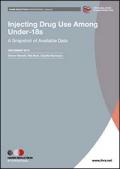
Resource | Reviews and Snapshots,
This report provides a snapshot of available data on injecting drug use among children and young people under the age of 18. It has three main aims:
- To increase attention to an often-overlooked aspect of responses to HIV and other health harms associated with unsafe injecting.
- To begin to understand the extent of the problem internationally, and how prevalence and patterns vary between regions and countries.
- To identify gaps and limitations in data collection in order to begin filling them.
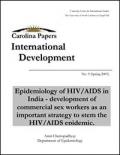
Resource | Publications,
India has the highest number of HIV/AIDS cases in the world. Current HIV/AIDS prevention strategies are based on regular and appropriate condom use. However, most commercial sex workers (CSWs), who form the core/high risk groups towards whom the prevention strategy is directed, are disempowered, and are economically marginalized which does not allow them to insist on 100% condom use by the client, especially in absence of governmental structural support. It is necessary to improve the basic living conditions of CSWs to provide the foundation for using condoms regularly, consistently and appropriately in every encounter and refuse a client who refuses to comply.
This policy paper argues that CSWs can be empowered and emancipated and suggests that HIV/AIDS control and prevention efforts in India must recognize that ad-hoc promotion of condom use or similar such programs will not be enough, and that more extensive developmental work aimed at betterment of basic living conditions of CSWs is required to fulfill HIV/AIDS prevention goals.
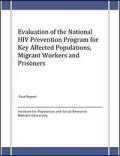
Resource | Publications,
The Institute for Population and Social Research (IPSR) of Mahidol University was selected by the National Committee for the Advancement of AIDS Prevention and the National AIDS Management Center (NAMc) to implement the Evaluation of the National HIV Prevention Program among Key Affected Populations and Prisoners in Thailand during 2010-2013. The second phase of the evaluation spanned the period from October 2011-December 2012 and consisted of an in-depth study of program inputs, processes, and expected outcomes of the program. Among others, the key research questions for the evaluation include: whether interventions are being implemented as planned as an integrated, defined package of HIV prevention services and defined standards of quality; the extent of coverage of the delivery of the HIV prevention package to the target populations; and the results of the delivery of the package of prevention services in terms of the increase in the proportion of the population who know their own sero-status, the reduction of HIV risk behavior, the reduction of STIs, an increased access to ART and opportunistic infection treatment.
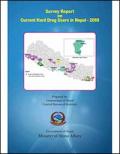
Resource | Publications,
Drug abuse is a worldwide problem that affects millions of people, and Nepal is no exception. Over the last years, growing drug use has been of increasing concern to the society in Nepal. It is mainly the young boys and girls who are engaging in drug use for a variety of reasons and many young Nepalese have already died from drug use. Drug use poses serious challenges as it affects foremost the health and life of the drug user, the social well-being of the family and community.
The primary objective of the survey was to estimate the total number of hard drug users in Nepal and hence to identify pattern and extent of drug use across the country, such as: age, sex, education, age at first drug intake, frequency/duration of drug use, mode of drug use, expenses made on drug and the perception of drug users towards the Government etc.





